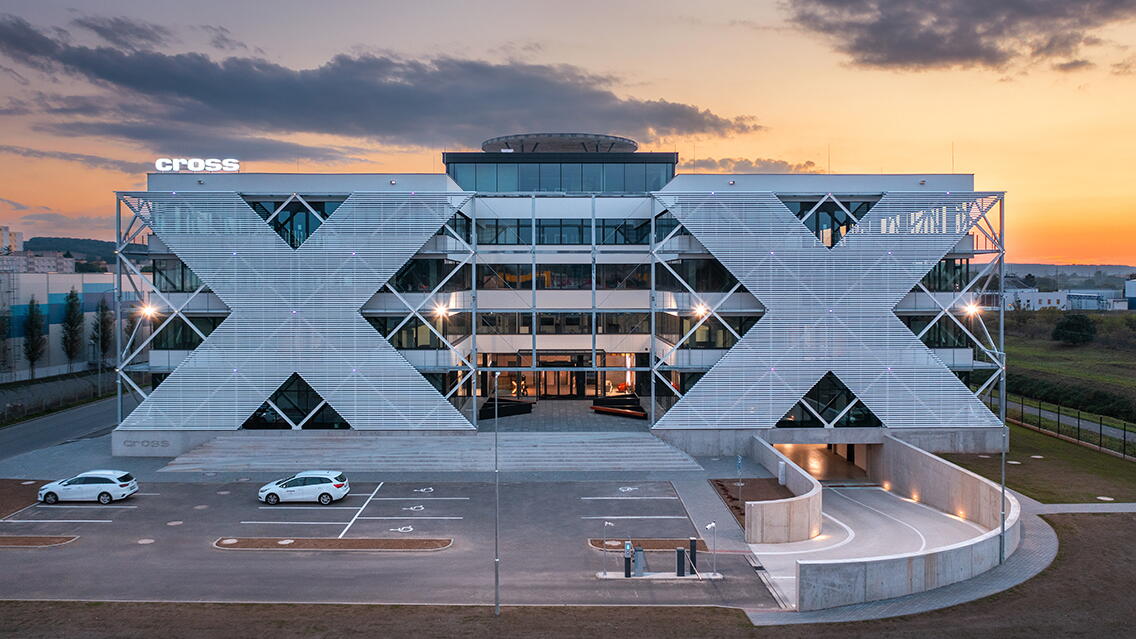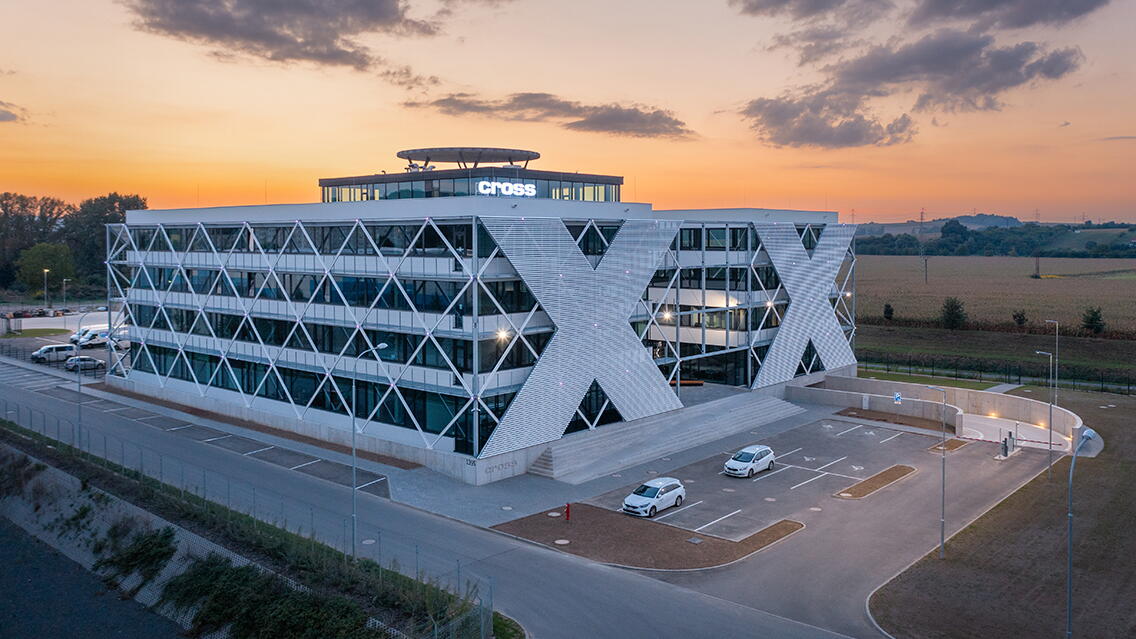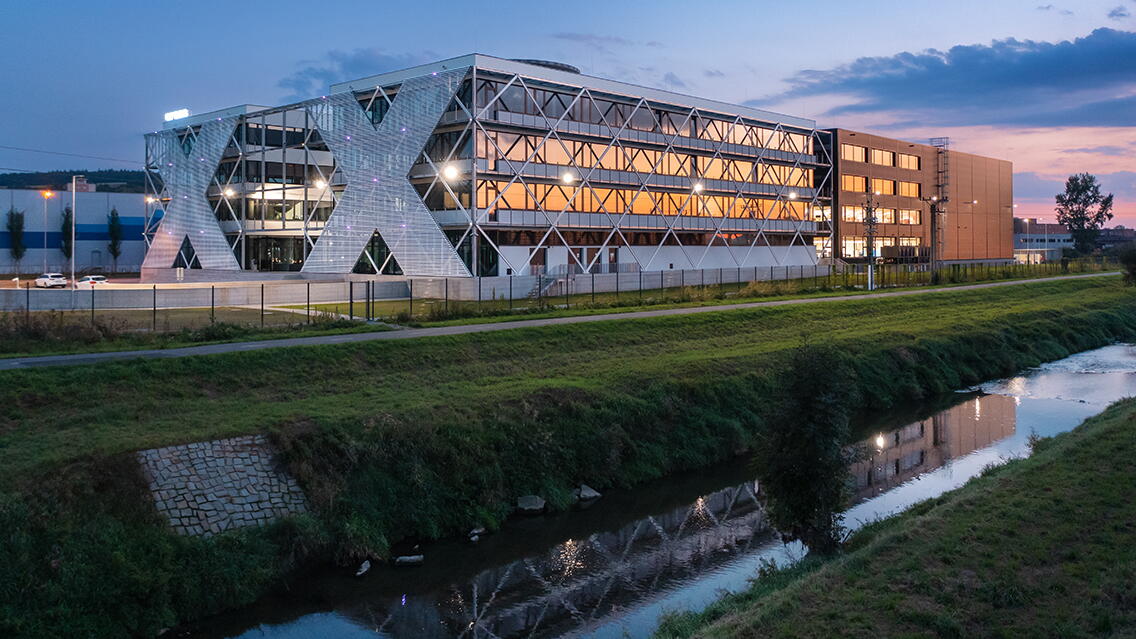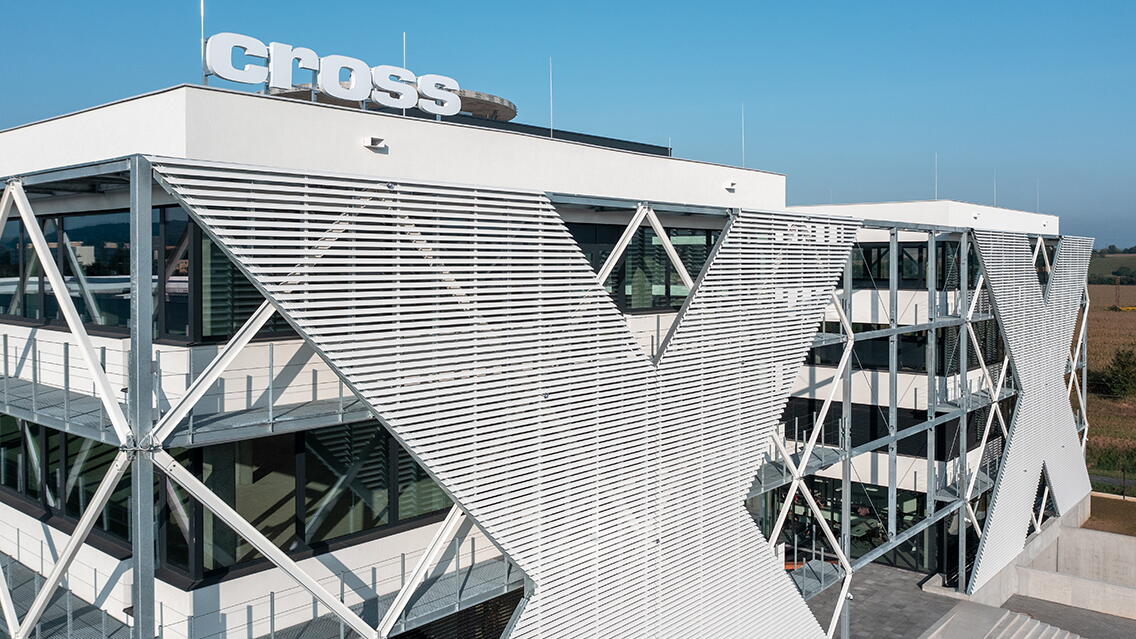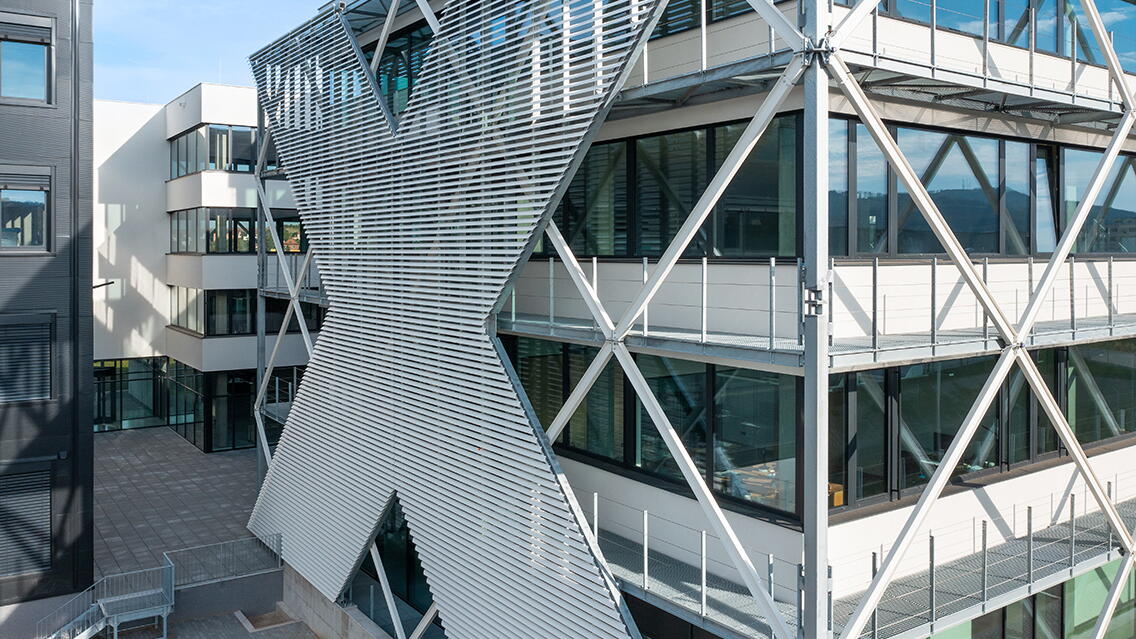The development and production headquarters of CROSS is a five-story building located in Otrokovice. The task of our company Static Point, spol. s r.o. was to optimize the structures and create fabrication documentation for concrete and steel structures. All structures in the highest detail were modeled in a complex model in Tekla Structures.
The structural system of the reinforced concrete buildings is mixed. Reinforced concrete floor slabs are supported by reinforced concrete columns and internal walls.
The columns and corners of the internal walls are fitted with shear rails to prevent punching through. The foundation slab and the perimeter underground load-bearing walls are designed as a watertight structure.
In contrast to the original concept of the building's load-bearing structure, which consisted of a deck with girders supported by columns, the building's load-bearing structure is replaced by 270 mm thick non-vaulted slabs with parapet beams around the perimeter. The vertical cores, consisting of columns at the corners and non-load-bearing partitions at the perimeter, have been replaced by solid reinforced concrete walls, which both have a favorable effect on the deformation of the slabs and, in particular, do not strain the individual slabs. The walls in the central core of the building have been replaced in a similar way, which improves the rigidity of the building and means that the ceiling slabs will not be overloaded by the effects of these walls.
The ceiling slab above the underground floor is designed as a lightweight reinforced concrete slab 320 mm thick. The lightening of the ceiling slab will be carried out using U-BOOT fittings with a height of 160 mm and axial distances between the fittings of 680 mm. The vertical position of the fittings will be secured by means of 80 mm high feet.
The whole structure is based on a pile system with a diameter of 630 to 1200 mm. A total of 118 piles are proposed for the building.
A pre-cast steel façade is proposed around the perimeter of the 'H' shaped development building. The façade primarily completes the architectural vision of the building. Secondarily, it carries service walkways used to maintain the glass façade. Structurally, the façade is conceived as a system of cantilevers that carry out the catwalks. The cantilevers are supported by an external diagonal bracing consisting of I-beams.
The steel facade is suitably divided into the expansion assemblies, which, in combination with the two types of anchorage of the cantilevers (hinge x fixed), create a setup that compensates for volume changes from temperature variations. The appropriate positioning of the expansion details allowed the use of subtle profiles and a saving of approximately 70t of steel compared to the original design.
The 'X' shaped elements are placed in axes 2.1 and 2.7 with a steel facade. These elements bring out the shading slat system and also contribute to their appearance to the overall architectural vision. The X-shaped elements are structurally connected to the front façade by bolted joints.
On the roof of the building there is a 'vertiport', which is a circular reinforced concrete slab with a diameter of 15m. The slab is flanked by a steel walkway, which is connected to a steel staircase with a footbridge. The 'vertiport' slab is supported by four sets of inclined columns, which are connected to the concrete structures by bolts set in concrete at the base and by a plate with studs at the top.

